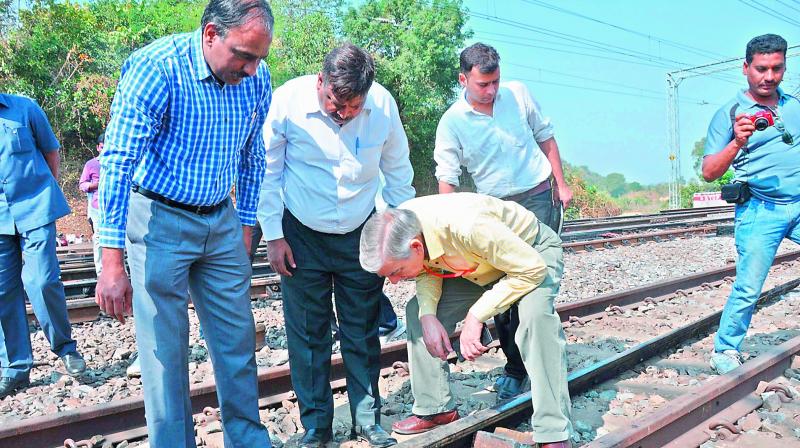Hirakhand Express mishap: Spotlight again on railway safety

Visakhapatnam: In AP’s worst train accident caused by derailment of the Hirakhand Express, over 40 lives have been claimed and over 60 people injured. The accident took place in the Kuneru area in Komarada mandal, Vizianagaram district.
This incident has once again brought to light the problem of poor safety standards in the Railways. Over the years, accidents have occurred due to various reasons ranging from human error and equipment failure to sabotage. Human error accounts for more than 85 per cent of all accidents, equipment fai-lure accounts for 2 to 5 per cent, and sabotage for 5 to 6 per cent.
Investigation into many of these cases remains pending. The most frequent railway incidents are derailments and accidents at level crossings.
The Ministry of Railways said that at least 50 derailments and 40 major accidents at level crossings have been reported in the country over the past year. According to statistics, between the years 2009 and 2015, close to 800 accidents were reported in the Indian Railways, which involved a total of 620 casualties and left 1,855 people injured.
50 per cent of these accidents were caused by derailment. Other types of accidents reported include collision, and fire, among others; but their frequency was extremely low.
The causes for derailment have broadly been classified into six categories. The major cause, accounting for 60 to 80 per cent of derailments, is manual error by the railway staff. The other causes include failure of equipment, sabotage, a combination of multiple factors and incidental accidents. Only 5 to 6 per cent of rail accidents have been attributed to sabotage, but the railway authorities often attempt to cover up negligence on their part by saying that foul play cannot be ruled out.
Though railway authorities claim that the safety of passengers is their top priority, gross negligence on their part is evident. After every major accident an inquiry is ordered; but the inquiry commission often takes months, or even years to submit their report. By then both the railway officials and the public have forgotten about the incident. It is only brought up again, when another similar incident takes place, said Prasad Das, a passenger who was aboard the Hirakhand Express. Poor track maintenance and unmanned level crossings are the reasons for most fatal accidents, he added.
It is a real pity to see railway authorities and politicians compare the magnitude of accidents in terms of number of casualties and injuries, while inquiry reports on past accidents and recommendations made to mitigate future ones gather dust. The higher authorities blame the trackmen instead of taking any action, said K. Siva Kumar, software professional.
A senior railway officer on condition of anonymity said that it was difficult to place the blame on any one party, in case of major accidents. In such a situation, it is unrealistic to expect that strict action be taken against those found guilty.

